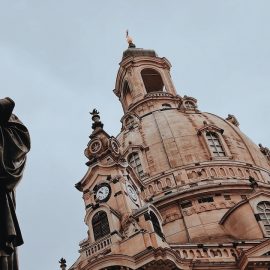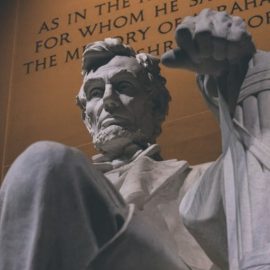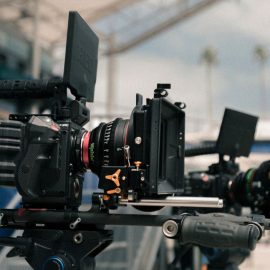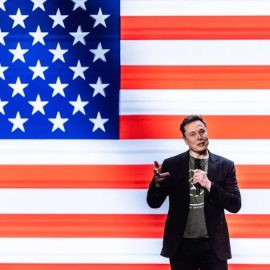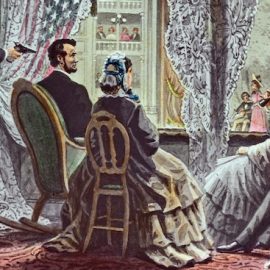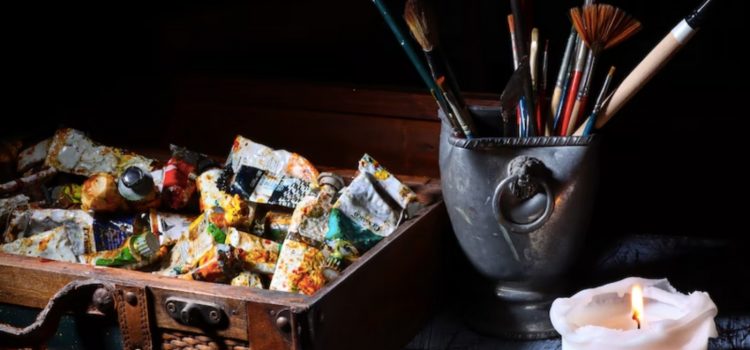
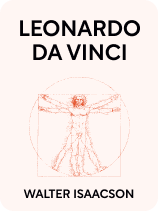
This article is an excerpt from the Shortform book guide to "Leonardo da Vinci" by Walter Isaacson. Shortform has the world's best summaries and analyses of books you should be reading.
Like this article? Sign up for a free trial here.
Who were Leonardo da Vinci’s patrons? Who paid Leonardo for his art?
Throughout his career, many people commissioned Leonardo da Vinci for his art. Some of them included the Medici, Cesare Borgia, and King Francis I.
Let’s look at Leonardo da Vinci’s patrons that are listed in his biography by Walter Isaacson.
Leonardo da Vinci’s First Patron: The Medici Family
Leonardo da Vinci’s first patron was the Medici family. The Medici were de facto leaders of Florence who helped shape the Renaissance era through their patronage of the arts. Isaacson explains, however, that some artists were more successful than others in securing that patronage. For example, Botticelli earned their support by inserting members of the Medici family into historical and biblical paintings. Leonardo, on the other hand, didn’t compromise his work to court favor.
Isaacson says this was a habit Leonardo continued throughout his life: He sought and took money from patrons, but only for work that he was excited about. He wasn’t afraid to leave employers waiting while he found the right way to approach a piece of work, or to ignore them altogether if the work they wanted him to do was uninspiring. (Shortform note: The patronage system defined the careers of Renaissance artists. Patrons helped the arts flourish and enabled artists to become more than anonymous craftsmen. However, patrons could be fickle and they were often more motivated by social competition than the pursuit of knowledge or beauty.)
Duke Ludovico Sforza
Once in Milan, Leonardo applied for a job at the Duke’s court. Isaacson claims that Leonardo emphatically promoted his ability to design weapons and war mechanisms. He did this because, first, he knew the Duke would be interested in strengthening his military power, and second, he was going through a painting rough patch and was feeling frustrated with his lack of accomplishments. However, the only military project Leonardo ever carried out for the Duke was a survey of the castle’s defenses.
Leonardo eventually secured his entry into Ludovico’s court as a producer of plays, pageants, and social events. According to Isaacson, these events legitimized Ludovico’s power, kept his people distracted, and kept family members with claims to power busy. On his part, Leonardo finally achieved the recognition he craved and could support himself by exercising his creativity and multidisciplinary approach through the combination of art and engineering.
Unfortunately, Ludovico was an unreliable employer and Leonardo began searching for other opportunities in the late 1490s, even going so far as to write letters in the third person praising his own work to possible patrons. In 1499, the French army invaded Milan and Ludovico fled. Leonardo remained in Milan for a few months, but in 1500, he decided to return to Florence. (Shortform note: Despite his unreliability, Ludovico was Leonardo’s most important patron. He commissioned some of his most significant work, connected him to a vibrant court that allowed Leonardo to pursue all his interests, and ensured Leonardo’s status by granting him the only piece of land he would ever own.)
Cesare Borgia
In 1502, around the age of 50, Leonardo worked for his most ruthless boss yet: Cesare Borgia. Cesare was on a military campaign to subdue several city-states and bring them under the power of the Pope (his father). During that campaign, Isaacson believes that Florence offered Leonardo’s services as part of a diplomatic package to ensure that Cesare wouldn’t invade the city. This placement gave Leonardo the opportunity to live out his military engineering dreams. Isaacson reports that, during this time, Leonardo:
- Offered advice on how to make fortresses stronger
- Designed ways to fortify dikes and connect harbors to the sea
- Built a self-supporting bridge
- Drew innovative aerial maps using an odometer he had designed
Charles d’Amboise
The French governor of Milan, Charles d’Amboise, became Leonardo’s patron. Isaacson claims that Leonardo became the most important member of Charles’s court in Milan. Charles wanted to surround himself with artists, engineers, and scientists—and Leonardo was all those things in one man. Charles gave Leonardo a salary and a home to live in, along with Salai. He was also protective of Leonardo. For example, when the Florentine government demanded that Leonardo return to finish some commissions he abandoned, Charles chastised them for badgering Leonardo and told them to take better care of their city’s most accomplished son. Until his death in 1511, Charles was a kind patron to Leonardo.
Giovanni and Giuliano de’ Medici
During his time in Rome, Leonardo didn’t accept any new painting commissions. Instead, Isaacson says he focused on improving the paintings he had brought with him from Milan. He also took engineering jobs for the court, such as draining marshes and designing a coin mint. Isaacson claims that Leonardo’s time in Rome was brief and unenjoyable. He got into arguments with people who worked for him and with those whom he believed were copying his ideas. The Pope also ordered him to stop performing dissections, limiting his anatomy studies. Since he wasn’t producing any paintings, he lost the Medici’s favor, and he decided to find other employment.
Leonardo’s Last Patron: Francis I
Leonardo’s move from Rome to France was thanks to King Francis I, who in 1515 invited Leonardo to his court. Francis admired the Italian Renaissance, and Leonardo in particular, and he wanted to bring that cultural revolution to France. Isaacson believes that Francis was the perfect patron for Leonardo’s last years. They shared a wide-ranging curiosity and taught each other what they knew. Francis didn’t condition his stipend on paintings or other works, and he let Leonardo work on projects that interested him, such as court events and works of engineering.

———End of Preview———
Like what you just read? Read the rest of the world's best book summary and analysis of Walter Isaacson's "Leonardo da Vinci" at Shortform.
Here's what you'll find in our full Leonardo da Vinci summary:
- A detailed look into the life, accomplishments, and struggles of Leonardo da Vinci
- Lessons from his life and work that you can apply to your own life
- What set Leonardo apart from other artists at the time

